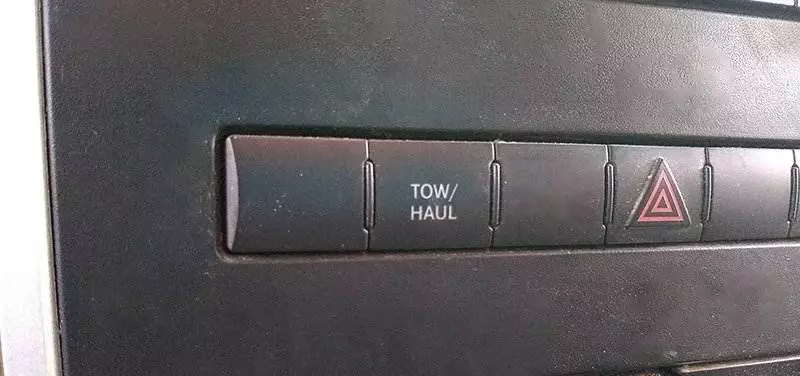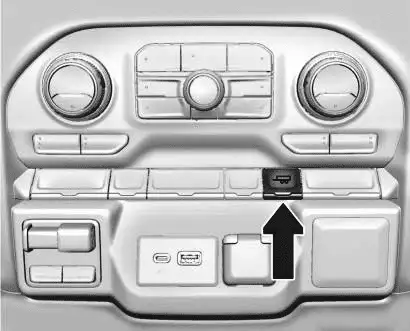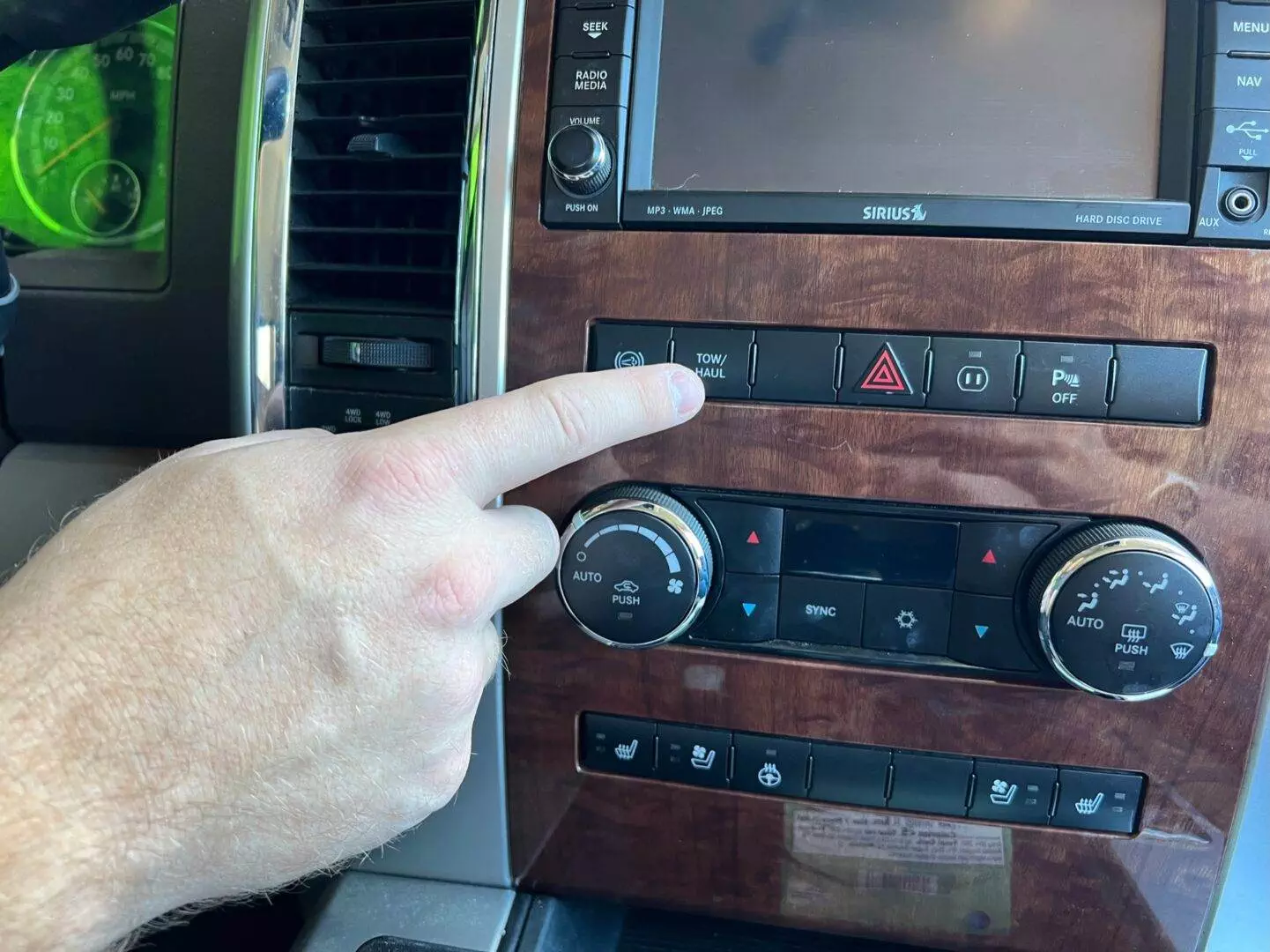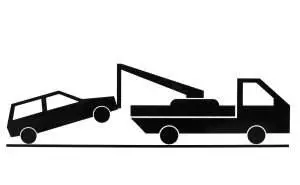We all know that trucks are built for heavy-duty tasks, and when it comes to towing, they can handle quite a load. But have you ever wondered what exactly happens when you engage the tow mode on a truck? Tow mode is a feature found in many trucks that adjusts the vehicle’s settings to optimize performance when towing a trailer or hauling a heavy load. From adjusting shift points to providing increased power, tow mode is designed to make towing easier and safer. In this article, we’ll take a closer look at what tow mode does on a truck and how it can enhance your towing experience.
What Does Tow Mode Do On A Truck?
Understanding Tow Mode
Tow mode is a feature found in many modern trucks that enhances the vehicle’s performance and safety when towing heavy loads. When engaged, tow mode modifies various aspects of the truck’s powertrain, transmission, and suspension to optimize performance while towing.
Benefits of Using Tow Mode
Using tow mode offers several benefits for truck owners who frequently tow heavy loads. Firstly, it significantly improves towing performance by optimizing the vehicle’s power delivery and torque output. This ensures that the truck can handle the extra weight more effectively and pull with greater ease.
Another advantage of using tow mode is enhanced stability. By making adjustments to the suspension and traction control systems, tow mode helps prevent the trailer from swaying or fishtailing, increasing overall safety and control while towing.
Tow mode also provides increased braking power. When activated, the braking system is modified to deliver stronger and more responsive stopping power, allowing the truck to handle the additional weight and momentum effectively.
Additionally, tow mode reduces transmission wear by altering shift patterns to prevent excessive gear hunting and unnecessary shifting. This prolongs the lifespan of the transmission and minimizes the risk of overheating during intense towing operations.
Optimized engine performance is another benefit of using tow mode. The feature adjusts throttle response, ensuring that the engine delivers power smoothly and consistently, even when hauling heavy loads. This prevents performance fluctuations and provides a more comfortable towing experience.
Using tow mode can also contribute to improved fuel efficiency. By optimizing gear ratios and engine performance, the truck can operate at its most efficient level, minimizing fuel consumption and reducing costs for truck owners.
For those who frequently navigate hilly or mountainous terrains, tow mode makes hill climbing and descending easier. The feature adjusts shift patterns, throttle response, and engine braking to improve control and stability during uphill climbs and downhill descents.
By reducing heat build-up in critical components like the engine and transmission, tow mode helps maintain optimal operating temperatures. This prevents excessive wear and potential damage, extending the overall lifespan of the vehicle.
Lastly, tow mode improves overall control and handling while towing, ensuring a safer and more comfortable experience for both the driver and passengers.

This image is property of cdn.getawaycouple.com.
How Tow Mode Works
Tow mode works by making various modifications to the truck’s powertrain, transmission, and suspension systems. These modifications optimize the vehicle’s performance while towing heavy loads.
When engaged, tow mode adjusts the powertrain to deliver more torque at lower engine speeds. This ensures that the truck has enough power to handle the increased load, improving overall towing performance.
The transmission shift patterns are also altered in tow mode. Shift points are adjusted to hold onto gears longer, allowing the engine to operate at higher RPMs and provide more power and torque when needed. This prevents the transmission from constantly shifting gears, which can be detrimental under heavy loads.
One key feature of tow mode is engine braking. This feature enhances the truck’s control and stability by utilizing the engine’s compression to slow down the vehicle. By applying resistance to the drivetrain, engine braking helps to reduce the strain on the regular braking system and prevents the brakes from overheating during prolonged towing.
Tow mode also monitors trailer sway. If the truck detects excessive side-to-side movement of the trailer, it will apply individual wheel braking and power adjustments to counteract the sway and maintain stability. This feature greatly enhances safety while towing by minimizing the risk of losing control or experiencing trailer sway accidents.
In addition, tow mode enables enhanced traction control, especially on slippery or uneven road surfaces. It adjusts the vehicle’s traction control system to distribute power appropriately to the wheels with the most grip, improving overall traction and reducing the chances of wheel slippage.
To protect critical components from overheating, tow mode activates additional cooling mechanisms. These can include increased airflow to the engine and transmission, as well as the utilization of auxiliary cooling devices such as transmission coolers. This prevents excessive heat build-up and ensures optimal operating temperatures during demanding towing conditions.
The activation and deactivation procedures for tow mode vary depending on the truck’s make and model. Typically, it is accessed through a button or switch located on the dashboard or center console. It’s important to consult the vehicle’s owner’s manual for specific instructions on how to engage and disengage tow mode.
When to Use Tow Mode
Tow mode should be used whenever towing heavy loads or navigating challenging road conditions. It is specifically designed to enhance the truck’s performance and safety in these situations.
When towing heavy loads, whether it be a trailer, boat, or any other form of cargo, tow mode should be engaged. The modifications made by tow mode optimize the vehicle’s power delivery, transmission shifting, and braking, allowing it to handle the additional weight more efficiently and safely.
Tow mode is also beneficial when driving on sloped or hilly terrains. The altered shift patterns and adjustments to throttle response ensure that the truck maintains power and torque even when climbing steep inclines or descending down hills.
In windy conditions, tow mode provides increased stability and control, reducing the risk of the trailer swaying or being affected by crosswinds. By making necessary adjustments to the suspension and traction control systems, tow mode helps maintain a more controlled towing experience.
For those specifically towing trailers, tow mode is essential. It enhances the truck’s stability, reduces the risk of trailer sway, and improves overall towing control, making it safer and more comfortable for both the driver and passengers.
When carrying heavy cargo in the truck bed, tow mode should also be used. The feature optimizes the vehicle’s performance by adjusting power delivery and transmission shifting to handle the additional weight more effectively.
Challenging road surfaces such as off-road trails or rough terrain also benefit from tow mode. The modified traction control and throttle response help the truck maintain grip and stability, ensuring a smoother and safer ride.
Lastly, tow mode is useful for frequent braking situations. Whether it’s due to heavy traffic or mountainous terrains, tow mode enhances the truck’s braking power, allowing it to handle frequent or intense braking maneuvers more effectively.

This image is property of www.rvingknowhow.com.
Tow Mode vs. Regular Driving
Tow mode differs from regular driving in several ways. These differences are specifically tailored to optimize the truck’s performance and safety while towing heavy loads.
One key difference between tow mode and regular driving lies in power and torque. Tow mode is designed to deliver more torque at lower RPMs, ensuring that the truck has enough power to handle the increased load. In regular driving, power and torque delivery are tuned for everyday driving conditions and may not be optimized for towing.
Modifications to transmission shift points are another notable distinction. In tow mode, shift patterns are adjusted to hold onto gears for longer periods, allowing the engine to operate at higher RPMs for more power and torque. This prevents constant gear hunting during towing, improving overall performance. In regular driving, shift points are optimized for fuel efficiency and smooth acceleration, rather than high-torque output.
Braking system adjustments are also different between tow mode and regular driving. Tow mode enhances the braking power to handle the additional weight and momentum during towing. The braking system may engage more aggressively and provide quicker response times to ensure safe and controlled stops. In regular driving, braking systems are calibrated for everyday driving conditions and may not offer the same level of braking power.
Modifications to throttle response are evident when comparing tow mode to regular driving. In tow mode, throttle response is adjusted to provide smooth and consistent power delivery. This ensures that the engine can efficiently handle the extra load while towing. In regular driving, throttle response is tuned for everyday acceleration and may not be as optimized for towing heavy loads.
Handling changes are another aspect that separates tow mode from regular driving. Tow mode often provides a more stable and controlled towing experience by adjusting the suspension and traction control systems. This results in increased stability and reduced sway while towing. In regular driving, the suspension and traction control systems are tuned for everyday comfort and handling.
Fuel consumption also varies between tow mode and regular driving. Tow mode optimizes gear ratios and engine performance to operate at the most efficient level while towing, minimizing fuel consumption. In regular driving, fuel efficiency is typically optimized for everyday driving conditions and may not be as efficient under heavy loads.
Engine and transmission stress is another aspect affected by tow mode. While tow mode is designed to handle heavy loads and provide optimal performance, it may subject the engine and transmission to increased stress compared to regular driving conditions. Regular driving conditions typically involve lighter loads and less demanding performance requirements, resulting in lower stress levels on the vehicle’s components.
Driving comfort can also differ between tow mode and regular driving. Tow mode is optimized for towing heavy loads, which may result in a firmer ride due to adjustments made to the suspension system. Regular driving, on the other hand, prioritizes passenger comfort and smoothness, resulting in a softer ride.
Lastly, gear ratios and acceleration may vary between tow mode and regular driving. Tow mode adjusts gear ratios to optimize towing performance and power delivery. This may result in slower acceleration but improved torque and pulling power. In regular driving, gear ratios are tuned for everyday acceleration and may offer faster acceleration at the expense of high-torque output.
Different Types of Tow Modes
There are various types of tow modes available in modern trucks, each designed to cater to specific towing conditions. These different tow modes provide unique performance characteristics and adapt to specific towing scenarios.
The standard tow mode is the default tow mode setting found in most trucks. It offers a balanced approach to towing performance, enhancing power delivery and transmission shift patterns to optimize towing capability.
Some trucks also feature an economy tow mode. This mode is designed to prioritize fuel efficiency while still maintaining decent towing performance. It achieves this by adjusting power delivery, throttle response, and shift points to operate at the most efficient level for towing.
For trucks that encounter snowy or icy conditions, a snow/ice tow mode is available. This mode modifies power delivery, transmission shifting, and traction control systems to provide better stability and control when towing in slippery conditions. It minimizes wheel slippage and enhances overall traction to ensure a safe towing experience.
Off-road tow mode is specifically designed for towing on rough or unpaved terrains. It adjusts power delivery, suspension, and traction control settings to optimize performance and control while towing off-road. This mode helps prevent wheel slippage and provides enhanced stability on challenging terrain.
Some trucks offer a sport tow mode, which optimizes towing performance for those who prefer a more aggressive driving experience. Sport tow mode adjusts shift points, throttle response, and suspension settings to provide a sportier and more responsive towing experience.
Manual tow mode allows the driver to manually control gear shifting during towing. In this mode, the driver can select the desired gear to optimize towing performance and control. This can be particularly useful when navigating steep inclines or descents, as it allows the driver to have direct control over gear selection.
Certain trucks also offer customizable tow modes, allowing drivers to tailor the performance characteristics to their specific preferences. These customizable modes typically allow adjustments to power delivery, transmission shifting, and suspension settings to optimize towing performance based on individual needs.
Trailer brake control is another key feature found in some tow modes. This feature allows the driver to control the trailer’s brakes directly from the truck’s brake system, providing enhanced control and safety while towing heavy loads.

This image is property of letstowthat.com.
Tow/Haul Mode vs. Tow Mode
Tow mode and tow/haul mode are two different features found in trucks that cater to towing needs. While they share similarities in optimizing towing performance, there are distinct differences between the two.
Tow/haul mode is designed to provide enhanced performance when towing heavy loads or hauling large payloads. It optimizes power delivery, transmission shift points, and even the engine braking system to handle the additional weight effectively. Tow/haul mode is typically engaged by a button or switch located on the shifter or dashboard.
One key feature of tow/haul mode is the ability to hold gears for longer periods. This ensures that the engine operates at higher RPMs, providing more power and torque when needed. It also prevents constant shifting and gear hunting, resulting in smoother and more controlled towing.
Tow/haul mode also adjusts throttle response, providing smoother and more precise power delivery. This ensures that the truck can handle the increased load more efficiently and reduces the risk of jerky or inconsistent acceleration.
Another notable feature of tow/haul mode is the modification of the engine braking system. Engine braking allows the vehicle to slow down using the engine’s compression rather than relying solely on the regular braking system. This reduces strain on the brakes and prevents them from overheating during prolonged towing or descending steep grades.
Compatibility with different trucks may vary for tow/haul mode. While many trucks feature this mode, it’s important to consult the vehicle’s owner’s manual or manufacturer’s guidelines to ensure compatibility and proper usage.
Tow mode, on the other hand, is a more general term used to describe the towing-specific mode found in various trucks. It offers similar performance enhancements as tow/haul mode but may vary in specific features and functionality.
The decision to use tow mode or tow/haul mode depends on the specific make and model of the truck, as well as personal preference. It’s important to consult the vehicle’s owner’s manual for guidance on which mode is recommended for towing and hauling.
Tow Mode and Safety
Tow mode plays a significant role in improving towing safety by enhancing the truck’s stability, control, and braking performance.
One of the most critical safety benefits of tow mode is improved towing stability. By making adjustments to the suspension and traction control systems, tow mode helps prevent trailer sway. This is especially important when towing heavy loads, as trailer sway can lead to loss of control and potentially dangerous accidents.
Tow mode also enhances braking performance, reducing stopping distances and improving overall control while towing. With modifications to the braking system, tow mode provides increased braking power, ensuring the truck can handle the additional weight and momentum effectively.
Furthermore, tow mode protects the transmission from overheating. By altering transmission shift patterns and engaging engine braking, tow mode reduces the strain on the transmission during intense towing conditions. This prevents transmission overheating, which can lead to component failure and costly repairs.
Enhanced traction control is another safety feature provided by tow mode. It adjusts the traction control system to distribute power appropriately to the wheels with the most grip, minimizing the chances of wheel slippage or loss of control on slippery or uneven road surfaces.
Tow mode also increases driver awareness through improved control and handling while towing. By optimizing the truck’s performance, tow mode ensures that the driver has better control over the vehicle, leading to increased situational awareness and a safer towing experience.
Many modern trucks equipped with tow mode also feature driver alert systems. These systems provide additional safety measures, such as blind spot monitoring, forward collision warning, and lane departure warning, to further enhance overall safety while towing.

This image is property of www.car-owners-manual.com.
Common FAQs about Tow Mode
- Is tow mode necessary for towing? While it is not necessary to engage tow mode while towing, it is highly recommended. Tow mode optimizes the truck’s performance, enhances stability, and improves overall safety, making it the ideal choice for towing heavy loads.
- Can I use tow mode when not towing? Yes, tow mode can be used when not towing, but its benefits are primarily optimized for towing heavy loads. However, using tow mode in regular driving conditions may result in firmer suspension settings and altered throttle response.
- Which gear should I use in tow mode? The ideal gear to use in tow mode depends on various factors, including the weight of the load, road conditions, and the specific terrain. It is best to consult the vehicle’s owner’s manual or follow the manufacturer’s guidelines for recommendations on gear selection while using tow mode.
- Does tow mode impact fuel efficiency? Tow mode can impact fuel efficiency, especially when towing heavy loads. However, it is designed to optimize the vehicle’s performance while towing, ensuring that the truck operates at its most efficient level for towing purposes.
- Can I engage tow mode while driving? Yes, tow mode can usually be engaged while driving. However, it is recommended to engage tow mode before starting to tow or when preparing for towing. Consult the vehicle’s owner’s manual for specific instructions on engaging or disengaging tow mode while driving.
Conclusion
In conclusion, tow mode is a crucial feature in modern trucks that significantly enhances towing performance and safety. Understanding how tow mode works, its benefits, and when to use it can greatly improve the towing experience and contribute to overall safety.
By optimizing the powertrain, transmission, and suspension systems, tow mode ensures that the truck can handle heavy loads more effectively. It improves towing stability, offers increased braking power, and reduces transmission wear. Additionally, tow mode enhances engine performance, improves fuel efficiency, and provides greater control and handling while towing.
Different types of tow modes cater to specific towing conditions, such as economy tow mode for improved fuel efficiency and off-road tow mode for towing in rough terrains. Tow/haul mode offers similar performance enhancements as tow mode but may have additional features specific to hauling large payloads.
Tow mode not only improves towing performance but also contributes to enhanced safety. It helps prevent trailer sway, reduces the risk of transmission overheating, and enhances traction control. The feature also increases driver awareness and can be complemented by additional safety systems such as driver alert systems.
While tow mode offers numerous benefits, it is important to follow manufacturer guidelines and operate within the truck’s towing capacity. Consulting the vehicle’s owner’s manual and understanding the specific procedures for engaging and disengaging tow mode is crucial to ensure optimal performance and safety.
In conclusion, utilizing tow mode when towing heavy loads provides an improved towing experience, enhanced safety, and extends the overall lifespan of the vehicle. By understanding how tow mode works and its various benefits, truck owners can optimize their towing capabilities and enjoy a more comfortable and secure towing experience.

This image is property of i.ytimg.com.



